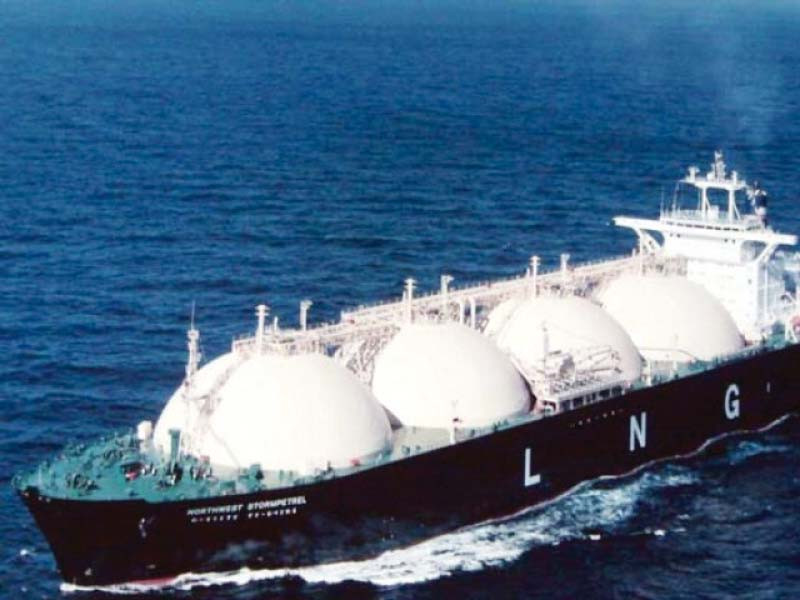
The Petroleum Division has disclosed that Pakistan LNG Limited (PLL) has been able to utilise only 70% of capacity of the country’s second liquefied natural gas (LNG) terminal.
In a summary sent to the Economic Coordination Committee (ECC), the Petroleum Division said that at terminal two PLL had been procuring and handling between 35 and 62 LNG cargoes worth Rs1-1.8 billion per year depending on gas need and prices.
However, it pointed out that PLL, set up by the government for LNG imports, had utilised only 70% of the contracted capacity of the LNG terminal despite making 100% payment for the contracted capacity.
PLL is utilising 70% of the contracted capacity of 600 million cubic feet per day (mmcfd) whereas consumers have been paying for the total contracted capacity since the LNG terminal reached its commercial operation date (COD) in January 2018.
With rising gas demand in the country, there is a need to import LNG to satiate the appetite of the growing economy.
The Petroleum Division underlined the need for expanding existing capacity of the second LNG terminal in a bid to satisfy consumer demand.
It suggested that private sector should be permitted to import LNG, which would reduce financial risk for the government. There would be less burden of circular debt on the government with the entry of private parties into LNG business, it said.
At present, state-run companies are facing the spectre of financial default because of the circular debt pile-up following import of expensive LNG and its injection into the system.
The government has asked public utility Sui Northern Gas Pipelines Limited (SNGPL) to inject LNG into its pipeline network in the current winter season in order to avoid gas crisis, which has already resulted in Rs100 billion being stuck in the system.
SNGPL has not been able to recover the money from domestic consumers as there is no legal mechanism in place for the recovery.
Pakistan State Oil (PSO) imports LNG from Qatar and its bill for LNG supply has also got stuck. It has to recover Rs160 billion from SNGPL on account of LNG supply.
A cabinet decision taken in July 2020, which allowed the private sector to import LNG, has not been implemented yet despite 30% unutilised capacity of the second LNG terminal, owned by Pakistan GasPort Consortium.
The government has allocated the terminal capacity of 600 mmcfd but it has excess capacity for 150 mmcfd.
Pakistan GasPort and PLL have reached an understanding under which the former will get 100 mmcfd of the extra capacity whereas 50 mmcfd will be allocated to PLL.
Under the deal, in exchange for PLL’s permission to utilise 100 mmcfd of capacity, Pakistan GasPort will not charge tolling fee for the extra 50 mmcfd allocated to PLL.
Gas consumers have already paid $99 million in capacity charges for the idle capacity of the terminal. Now, they may face more burden if PLL fails to utilise the 650mmcfd capacity.
However, the private sector is going to import 100 mmcfd by utilising the excess capacity of the terminal after the ECC gives its stamp of approval.
The private sector has been struggling since 2015 to win allocation for the terminal’s idle capacity but it has not been able to bring even a single ship due to hurdles in its way.
As Pakistan GasPort has now been allowed to utilise the excess capacity of 100 mmcfd, there will be competition in the gas market.
Published in The Express Tribune, December 9th, 2021.
Like Business on Facebook, follow @TribuneBiz on Twitter to stay informed and join in the conversation.


1732274008-0/Ariana-Grande-and-Kristin-Chenoweth-(1)1732274008-0-165x106.webp)















COMMENTS
Comments are moderated and generally will be posted if they are on-topic and not abusive.
For more information, please see our Comments FAQ